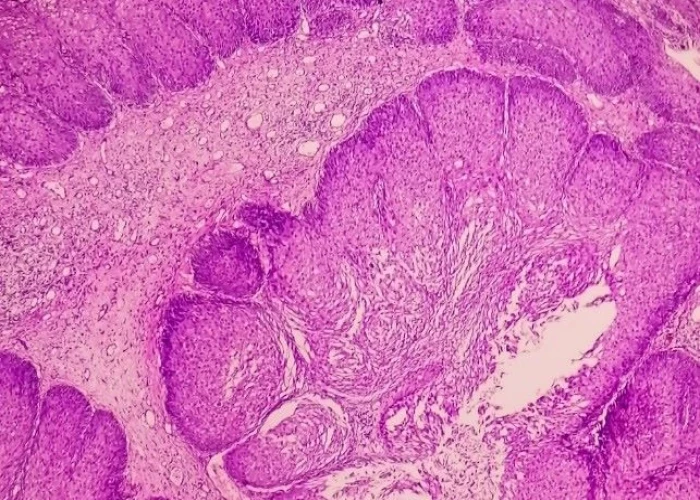 Welcome
Welcome
“May all be happy, may all be healed, may all be at peace and may no one ever suffer."
Nasal and paranasal tumors

Nasal and paranasal tumors are rare tumors that develop in the nasal cavity or the sinuses surrounding the nasal cavity. The paranasal sinuses are air-filled spaces in the bones of the face that connect to the nasal cavity. Tumors that develop in these areas can be benign or malignant.
Symptoms of nasal and paranasal tumors can include nasal congestion, nasal discharge, facial pain, headaches, vision problems, hearing loss, and frequent sinus infections. These symptoms may develop gradually over time or may appear suddenly.
The exact cause of nasal and paranasal tumors is not well understood, but they are thought to be associated with exposure to certain chemicals or substances, such as wood dust or radiation, as well as genetic factors.
Diagnosis of nasal and paranasal tumors may involve imaging tests, such as CT or MRI scans, to view the affected area. A biopsy may also be performed to determine if the tumor is cancerous or non-cancerous.
Treatment options for nasal and paranasal tumors depend on the type, location, and stage of the tumor. Treatment may include surgery to remove the tumor, radiation therapy, chemotherapy, or a combination of these treatments. Supportive care, such as pain management and nutritional support, may also be provided to manage symptoms and improve quality of life.
The prognosis for nasal and paranasal tumors varies depending on the type and stage of the tumor, as well as the individual's overall health. It is important for people with these tumors to work closely with a healthcare team to develop a treatment plan that meets their individual needs.
Research Papers
Disease Signs and Symptoms
- Difficulty breathing (dyspnea)
- Smell loss
- Nose bleeding
- Nasal discharge
- Swollen facial
- Watery eyes
- A sore or lesion on the roof of the mouth
- Neck lump
Disease Causes
Nasal and paranasal tumors
Nasal and paranasal tumors form when a genetic mutation turns normal, healthy cells into abnormal cells. Healthy cells grow and multiply at a set rate, eventually dying at a set time. Abnormal cells grow and multiply out of control, and they don't die. The accumulating abnormal cells form a mass (tumor).
If the abnormal cells become cancerous, they might invade nearby tissues and separate from an initial tumor to spread (metastasize) to other parts of the body.
Disease Prevents
Nasal and paranasal tumors
To reduce your risk of nasal and paranasal tumors, you can:
- Stop smoking. If you don't smoke, don't start. If you smoke and want to quit, talk with your doctor about strategies that can help, such as counseling and medications.
- Protect yourself at work. Follow your workplace safety rules for protecting yourself from harmful fumes and irritants in the air, such as wearing a face mask.
Disease Treatments
Treatment for nasal and paranasal tumors depends on where your tumor is located and what types of cells are involved. Your health care team will work with you to devise a treatment plan that is best for your particular tumor.
Surgery
Most nasal and paranasal tumors are treated with surgery to remove the tumor. Surgical options may include:
- Open surgery. Surgeons may need to make an incision near your nose or in your mouth to access your nasal cavity or sinus. Surgeons remove the tumor and any areas that may be affected, such as nearby bone.
- Minimally invasive surgery. In certain situations, surgeons may be able to access the tumor using nasal endoscopy and special tools. The tools are inserted through your nose, and a tiny camera allows surgeons to perform the operation.
Nasal and paranasal tumors are located near critical structures in your head, such as your brain, eyes and the nerves that control vision. Surgeons work to minimizes damage to these areas.
Radiation therapy
Radiation therapy uses high-powered energy, such as X-rays and protons, to kill cancer cells. Radiation therapy can be used on its own or after surgery to treat nasal and paranasal tumors.
Chemotherapy
Chemotherapy is a drug treatment that uses chemicals to kill cancer cells. In people with nasal and paranasal tumors, chemotherapy may be used before or after an operation. Chemotherapy may also be used in combination with radiation therapy.
Palliative care
Palliative care is specialized medical care that focuses on providing relief from pain and other symptoms of a serious illness. Palliative care is provided by a team of doctors, nurses and other specially trained professionals. Palliative care teams aim to improve the quality of life for people with cancer and their families. This form of care is offered alongside curative or other treatments you may be receiving.
Disease Diagnoses
Disease Allopathic Generics
Disease Ayurvedic Generics
Disease Homeopathic Generics
Disease yoga
Nasal and paranasal tumors and Learn More about Diseases

Itchy skin (pruritus)

Costochondritis

Chronic lymphocytic leukemia

Dry socket

Jaw tumors and cysts

Diabetic hypoglycemia

Ascariasis

Orthostatic hypotension (postural hypotension)
nasal and paranasal tumors, নোসাল এবং প্যারানাসাল টিউমার
To be happy, beautiful, healthy, wealthy, hale and long-lived stay with DM3S.
